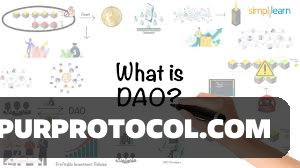Understanding DAO
DAO(Decentralized Autonomous Organization
Go Back

🕒 5:21 PM
📅 Aug 25, 2025
✍️ By Naftal
here’s the straight-up breakdown:
A DAO (Decentralized Autonomous Organization) is basically an organization run by rules encoded on a blockchain, instead of traditional managers or executives. It’s:
Decentralized → No central authority; decisions come from token holders or members.
Autonomous → The rules and operations (like voting, funding, or governance) are enforced automatically via smart contracts.
Organization → It can manage funds, make proposals, and coordinate communities—kind of like a digital co-op.
Key Features:
1. Governance via tokens – Members usually hold governance tokens that let them vote on proposals (e.g., funding a project, changing rules).
2. Smart contracts – These are self-executing codes on a blockchain that carry out decisions transparently and without middlemen.
3. Transparency – Everything (votes, treasury, proposals) is on-chain, so it’s open and auditable.
4. Community-driven – The community decides the future instead of a CEO or board.
Real-world Examples:
MakerDAO (manages the DAI stablecoin).
Uniswap DAO (governs Uniswap protocol upgrades).
Aave DAO (governs lending protocol decisions).
Why it matters:
DAOs flip the script on traditional orgs by giving communities actual control over resources and direction—like a company run by its shareholders in real-time, but without the bureaucracy.
👉 In short: a DAO is a blockchain-native, community-governed organization where the code + members replace the CEO.

